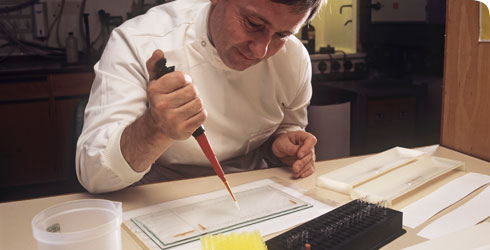The scientific process
The work of scientists can be very diverse. Research can take place in the field or in the lab, and methods of analysing results are advancing all the time as modern technology makes new things possible.
For example, we can now date rocks more accurately than we used to be able to. Also, the study of DNA lets us work out relationships between organisms in a new way.
But whatever technology scientists are using, they all follow certain key principles. Find out more about the scientific method, why it is used, and what goes wrong when it is ignored.
-

Science methods
Find out how scientists get their knowledge, how it's tested, and how we can trust that it's reliable.
-

Fieldwork
Find out how scientists collect specimens to study from a wide range of environments including the sea bed, the frozen ice of the Antarctic, and deep underground.
-

Dating methods
How do scientists find out how old rocks and fossils are? And how sure can they be that their dating methods are accurate?
-

Methods for examining specimens
Find out how scientists examine specimens with the help of modern technology and more traditional methods.
-

DNA analysis
Find out how scientists use genetic information to examine relationships between species.
-

Piltdown Man - the greatest hoax in the history of science?
Follow the story of Piltdown Man, once hailed as our early human ancestor but exposed as a shocking scientific fraud 40 years later. Who did it and why?
-

X-rays reveal prehistoric sex-life of ostracods
Journey back in time to see images of 100-million-year-old microscopic animals called ostracods, made using revolutionary X-ray technology at the European Synchrotron Radiation Facility in France.
-

Maggots and murders: forensic entomology
Martin Hall presents a gruesome overview of the ways in which insects can provide vital clues in murder cases.
Piltdown Man hoax

Once believed to be the 'missing link' between apes and humans, Piltdown Man was exposed as an audacious fraud.
Find out about the key suspects and research that could finally reveal the truth.
